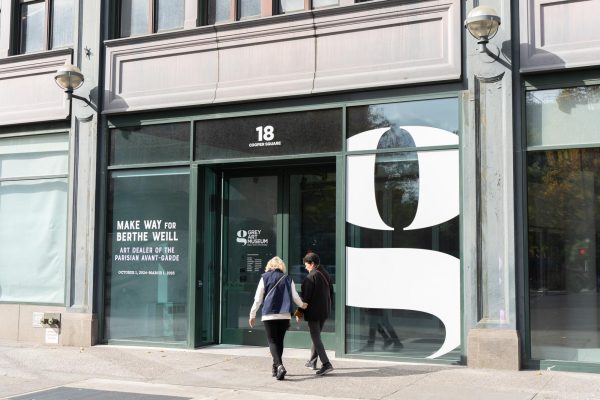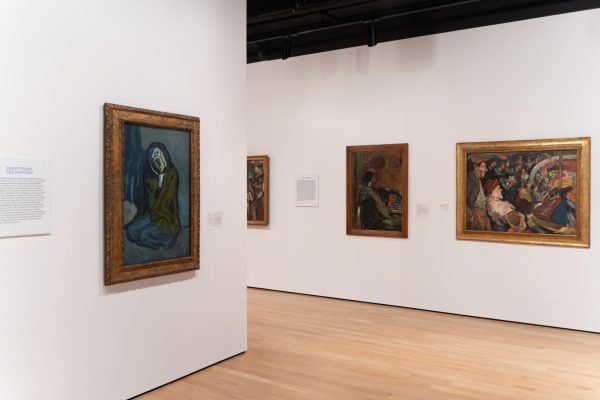Entering the Grey Art Museum, English and French chatter bounces off the walls as gallery-goers lust over harmonious impressionist paintings, absurd cubist pieces and striking fauvist colors. It is a space where well-known paintings by artists such as Henri Matisse can coexist with the works of lesser-known painters like Louis Cattiaux.

Currently on display at the museum, the exhibition “Make Way for Berthe Weill: Art Dealer of the Parisian Avant-Garde” transports viewers back to art collector Berthe Weill’s gallery, showcasing her dedication to effectively creating the market for 20th-century art amid a bevy of challenges.
In 1865, Weill was born into a humble Jewish family in Paris. As a teenager, Weill worked as an apprentice with her art-dealing cousin, Salvator Mayer, before eventually opening her own shop in 1896. Four years later, Weill purchased three of Pablo Picasso’s works — the first dealer to do so. In 1901, Weill opened her inaugural exhibition for emerging artists. However, her gallery wasn’t immediately successful because of her young, unknown artists and the minimal interest in a female art dealer in the male-dominated market. Once the Nazi occupation of Paris began, Weill put a friend in charge of the gallery, but there was little business. In May 1941, her gallery was closed and cleared out.
As an individual who has been omitted from history, the curators — Lynn Gumpert, Marianne Le Morvan, Anne Grace and Sophie Eloy — purposefully decided to place a timeline of Weill’s life at the beginning of the exhibition. From here, visitors can gain a greater appreciation for her impact on the art world. Placed near the entrance of the museum, “Portrait de Berthe Weill (Portrait of Berthe Weill)” gives viewers an excellent introduction to Weill by highlighting her professionalism.
Enclosed in a simple gold frame, this piece, painted by her close friend Émilie Charmy, highlights Weill’s emblematic businesslike quality. Weill is centered on the paintings, showing her from just below the waist to her head. Her left hand emerges from the pocket of her jacket and reveals her wristwatch — a reminder of her “precious time and professional stature.” Moving up the painting, her dark oversized jacket wraps around her entire body. Weill gazes out at the viewer through her spectacles with a calm but slightly analytical expression, as if she is dissecting the viewer like a painting. Notably, Weill takes up most of the canvas, emphasizing her grandeur and deserved respect.
Continuing through the gallery, the exhibition poignantly highlights one of the many skills that contributed to Weill’s success: her ability to form relationships with artists, such as with Suzanne Valadon. As a result of their fruitful friendship, Weill started showcasing Valadon’s work in 1913. Likely influenced by her previous experience as an artist’s model, the gallery outlines Valadon’s portrayal of women as residing in “domestic interiors, including nudes that resist sexual stereotypes.”

“Nu à la couverture rayée (Nude with a striped blanket)”, painted in 1922 by Valadon, illustrates an intimate image of her niece, Gilberte. She sits slouched on her unmade, messy bed completely undressed and glances down at her left hand, which is on the page of her book. Gilberte’s hair is pulled back into a bun, completely exposing her decolletage. Her legs hang off the bed with her ankles slightly crossed. Gilberte is completely relaxed and appears unaware of the viewer in the privacy of her room. This oil painting is in stark contrast with the self-conscious and sexual depictions of the nude female body from many of Valadron’s contemporaries.
This piece demonstrates Weill’s ability to recognize Valadon’s excellence in presenting the female body from a new perspective that is divorced from the common sexualized patriarchal point of view. Valadron didn’t let the male-dominated perception of the time period overtake her own vision, and neither did Weill when choosing her artists and artworks.
The curators and organizer of this exhibition deserve great respect and acknowledgment for their excellence in unearthing Weill’s historically omitted influence. With the knowledge that she overcame “sexism, antisemitism and economic struggles,” Weill’s accomplishments are even more impressive. Weill’s tenacity certainly left an impact on the artists she worked with, allowing them to recognize their own talents to forge successful careers. “Make Way for Berthe Weill” ensures that Weill’s years of work and inspiring legacy will no longer be left out of history.
“Make Way for Berthe Weill” is open to the public, free of charge, at NYU’s Grey Art Museum through March 1, 2025.
Contact Siobhán Minerva at [email protected].
